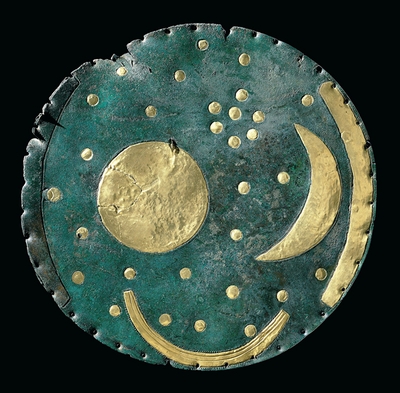The Nebra Sky Disk
In June 2013, the Nebra Sky Disk was entered into the UNESCO “Memory of the World” register as the oldest concrete representation of cosmic phenomena. The sky disk combines the knowledge of several generations and was changed a number of times during the 100- to 200- year period that it was in use, before it was ritually interred along with valuable grave goods and consecrated to the gods on Mittelberg, a hill near Nebra (Sachsen-Anhalt) about 3,600 years ago.
In its earliest form, the sky disk displayed the full moon or the sun, the crescent moon and the Pleiades and contained a complicated message in an apparently simple form – a precise calibration of the lunar and solar years, which have different durations. As a result, an astronomical instrument was available for the first time that could be used to precisely determine dates over the years. A written record of the leap year rule first appeared 1,000 years later. Until now, astronomical knowledge from such an early time has only been known to us in monumental constructions such as Stonehenge, although in a much more abstract form in that case.
Over its varied history, the disk was enhanced and changed and was even given religious elements. In preliterate times, the sky disk thus combined an extraordinary understanding of astronomical phenomenon with religious concepts. It holds unique historic value for the heritage of humanity. Plundered by grave robbers in 1999, it was rediscovered in 2002 and since then has been held in the State Museum of Prehistory in Halle.








